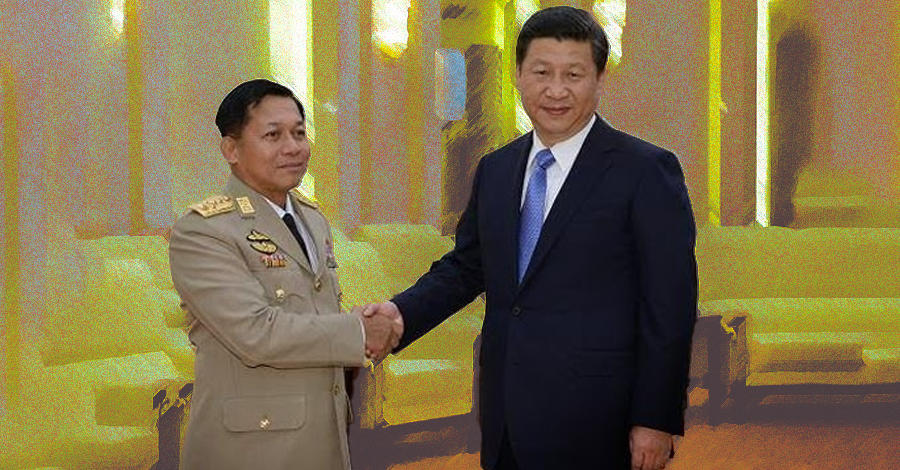Myanmar Spring Chronicle – December 04
MoeMaKa, December 05, 2023
Protests Emerge Against Chinese Influence in Myanmar Politics
Myanmar, sharing extensive borders with China, a global powerhouse, and neighboring India, a regional force, finds itself entangled in the complexities of regional politics. China and India, despite not enjoying amicable relations, have maintained a delicate balance, prompting numerous speculations about their involvement in Myanmar’s political landscape, especially amid the ongoing civil strife. Much of this information remains speculative, making it challenging to validate.
India, although critical of Myanmar’s revolutionary armed groups, exclusively maintains government-to-government ties with the Military Council, despite widespread condemnation. The state of Mizoram, bordering Chin State, has welcomed tens of thousands of refugees, demonstrating a compassionate stance, while Assam, another bordering state, adopts a less sympathetic approach towards Myanmar refugees.
Under the leadership of nationalist BJP figure Modi, India, seemingly disinterested in Myanmar’s democratic struggle, pragmatically recognizes the military junta as the governing body. This pragmatic stance, devoid of active support for Myanmar’s democracy movement, aligns with India’s prioritization of its own strategic interests.
The geopolitical connection between China and Myanmar is underpinned by keywords like influence, involvement, interest, and a facet of global strategy. Dispelling the notion that China orchestrated Myanmar’s political challenges, the reality is that China plays a crucial role in Myanmar’s “One Belt, One Road” initiative and serves as a vital conduit for Yunnan Province’s sea access, cargo transportation, and energy needs.
China’s considerations in Myanmar span dependence on China by autonomous regions bordering China, investments, and a global strategy to prevent the rise of pro-American political and military forces in neighboring countries.
Historically, Myanmar’s politics has witnessed the use of anti-China sentiments, with instances of Chinese intervention and support in political and civil conflicts. The Communist Party of Burma, once aligned with the Communist Party of India, shifted allegiance to the Chinese Communist Party after 1960. During the Cultural Revolution, the Sino-Burmese war erupted, solidifying Chinese support for the Communist Party of Burma.
Despite historic animosity, the Myanmar military, after the disintegration of the Communist Party of Burma in 1988, sought economic benefits over international Communist Party affiliations. China, once viewed as an enemy, became an ally for the junta post the 8888 Uprising. The SPDC junta later diversified its alliances, engaging with Russia, Pakistan, and North Korea in addition to its association with China.
Post-2009, China’s influence on emerging ethnic armed groups strained relations with the Myanmar military, leading to perceptions of Chinese assistance to these groups. Opposition forces in Myanmar, misunderstanding China’s interest-based policy, rallied against China, aligning with Western positions.
Anti-China protests, at times led by anti-dictatorship forces and sometimes by military supporters, have stemmed from various issues such as environmental concerns, the Myitsone project, the Letpadaung Taung copper project, and China’s support for military activities of ethnic armed groups.
Observing and analyzing China’s positions and decisions based on its interests is crucial for Myanmar’s anti-dictatorship forces to formulate a consistent and stable policy in response to China’s influence in the country’s political landscape.

